Croatia
A country of islands, rocky beaches and picturesque coastlines. A country so rich in culture and scenic landscapes. Could there be a better destination? Less than half a day’s drive from southern Germany, you can enjoy azure coasts and a Mediterranean climate. The cities are more varied than almost anywhere else: Roman amphitheaters, baroque and classicist buildings, communist concrete buildings and modern skyscrapers are often not far from each other. And if you’ve had enough of the cities, head out to one of the islands or to the huge waterfalls and nature parks. Croatia makes you want to discover.
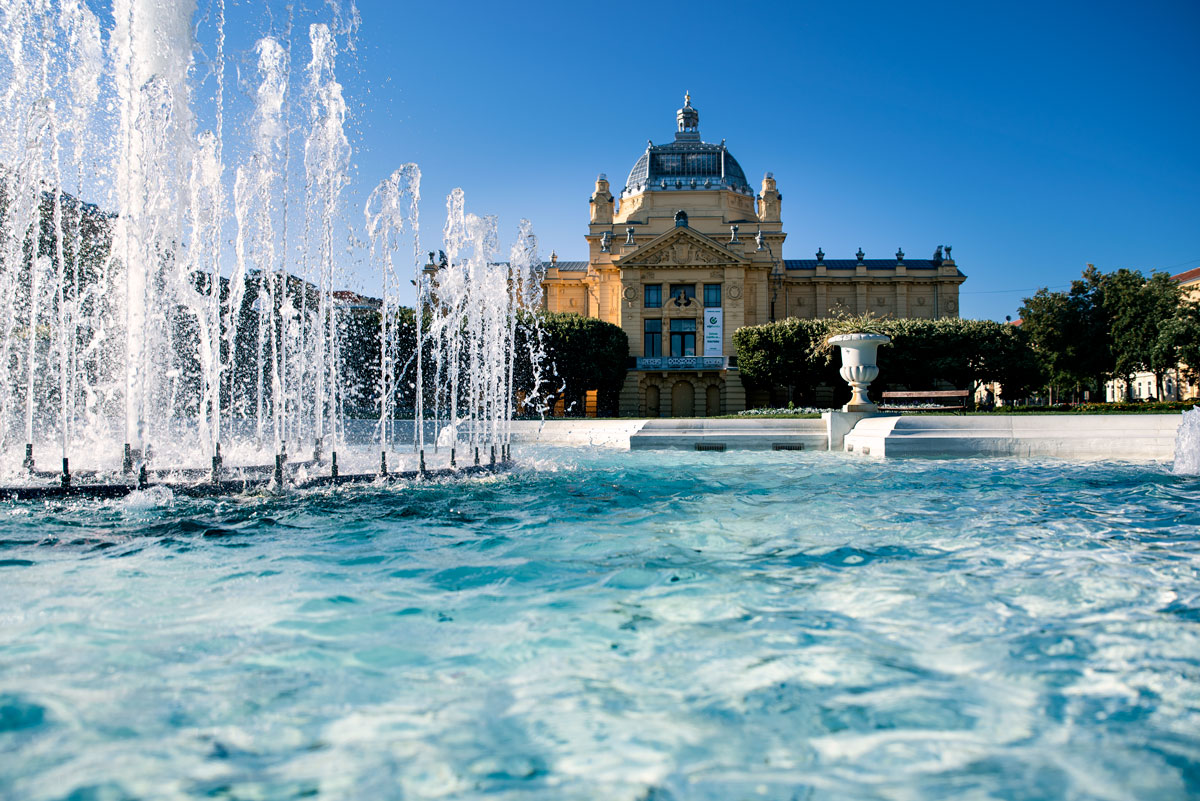
A wide, multi-lane road leads us into the center of Zagreb. The outskirts are gray and full of Yugoslavian-communist high-rises. The true charm of the city only becomes apparent once you leave the main train station behind you. Beautifully landscaped parks are a cool retreat on this hot summer’s day. Children play in the ice-blue water at the fountain in front of the art pavilion. Cafés, bars and restaurants abound in the narrow streets of the city center. Streetcars rumble past Ban Jelačić Square. Passers-by rush into the stores and shopping centers. Street performers make music and put on their little shows.
Behind a row of houses, we discover a large open-air market. Wilted flowers lie on the ground. The smell of meat and cheese still hangs faintly in the air. We are too late, most of the vendors have already packed up their goods. The two towers of Zagreb Cathedral rise up just a stone’s throw away. The sunlight of this late afternoon bathes them in gold. Believers stream in expectantly. The bells ring. Teenagers stroll past to the nearby party street. Zagreb is alive.
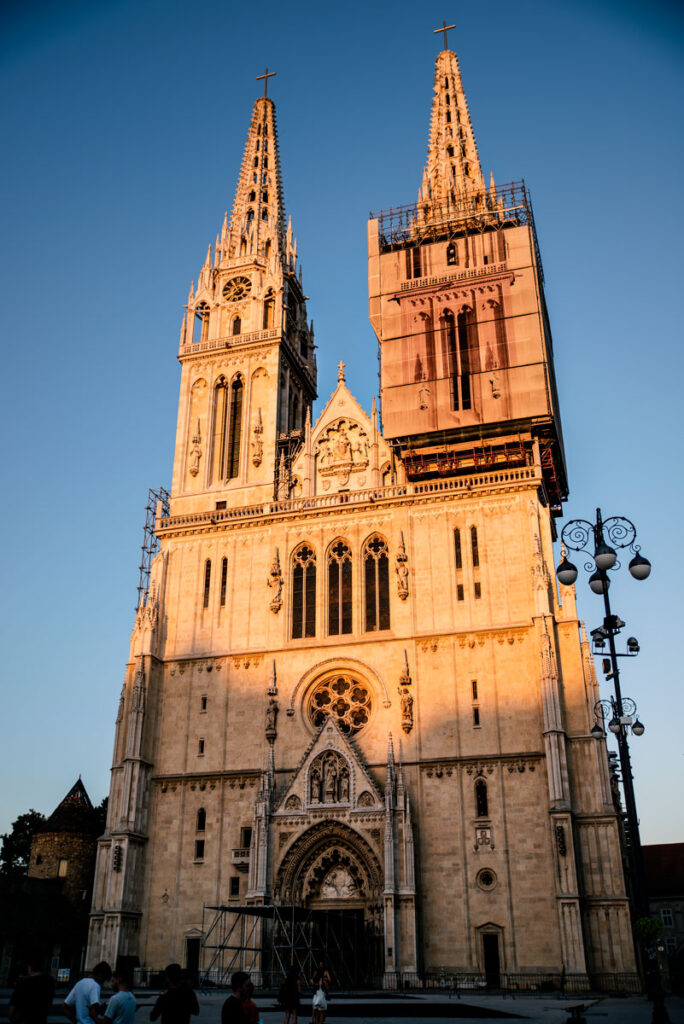
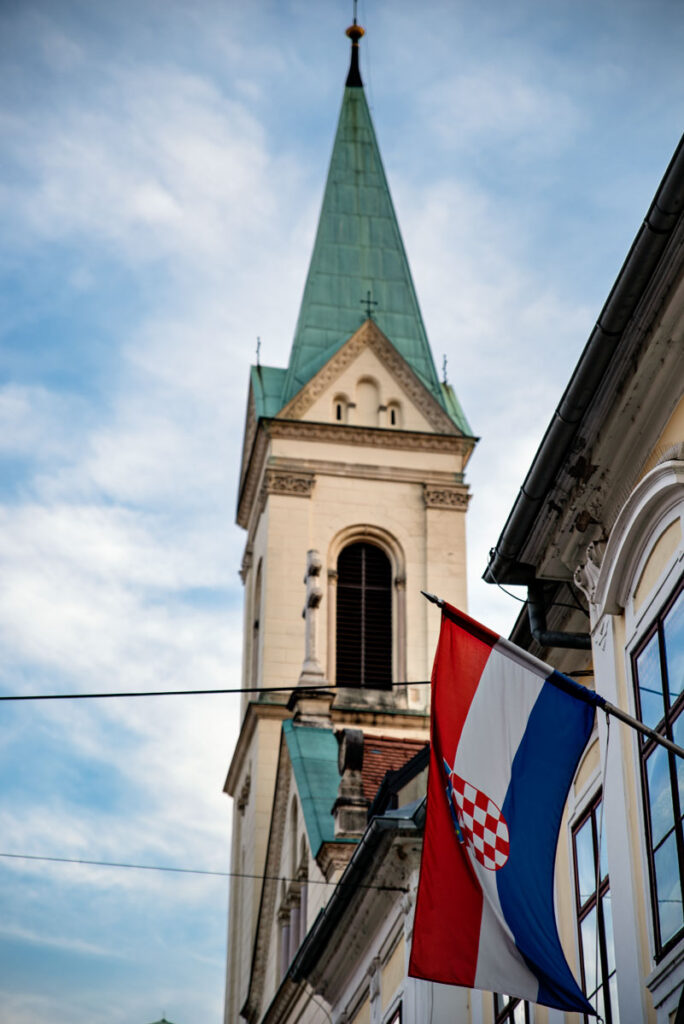
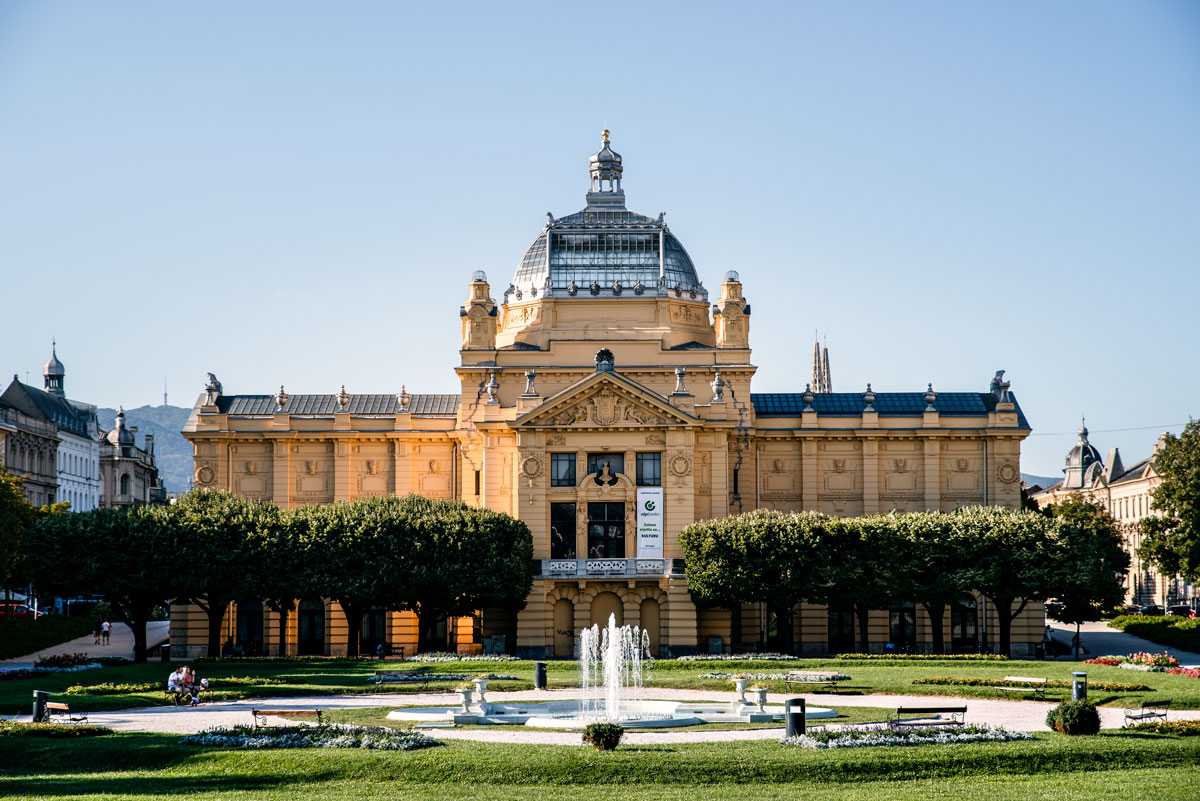
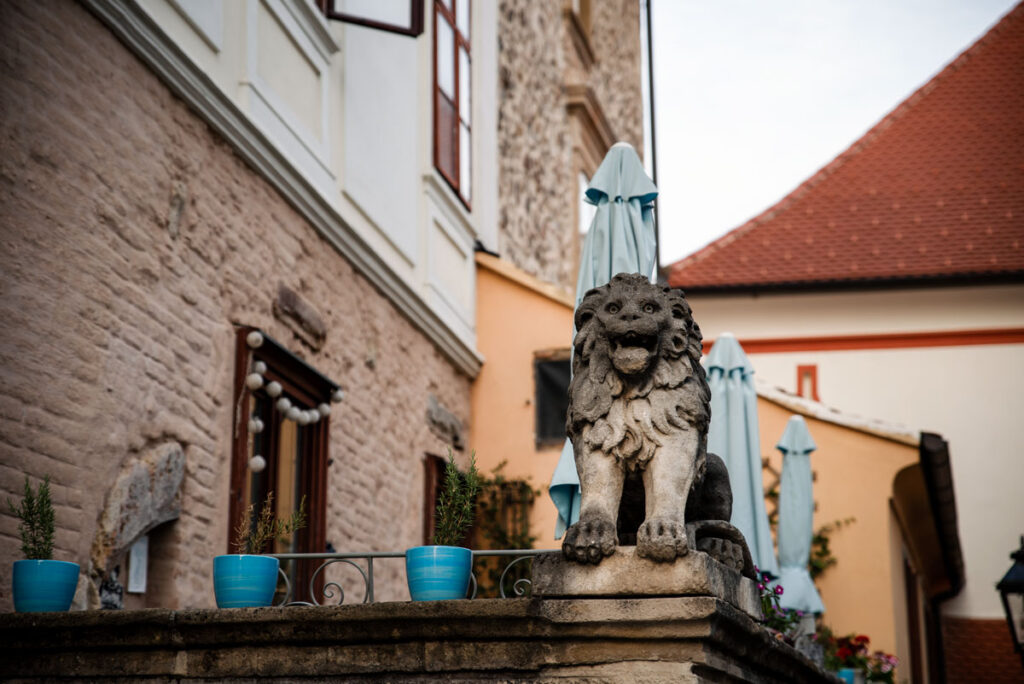
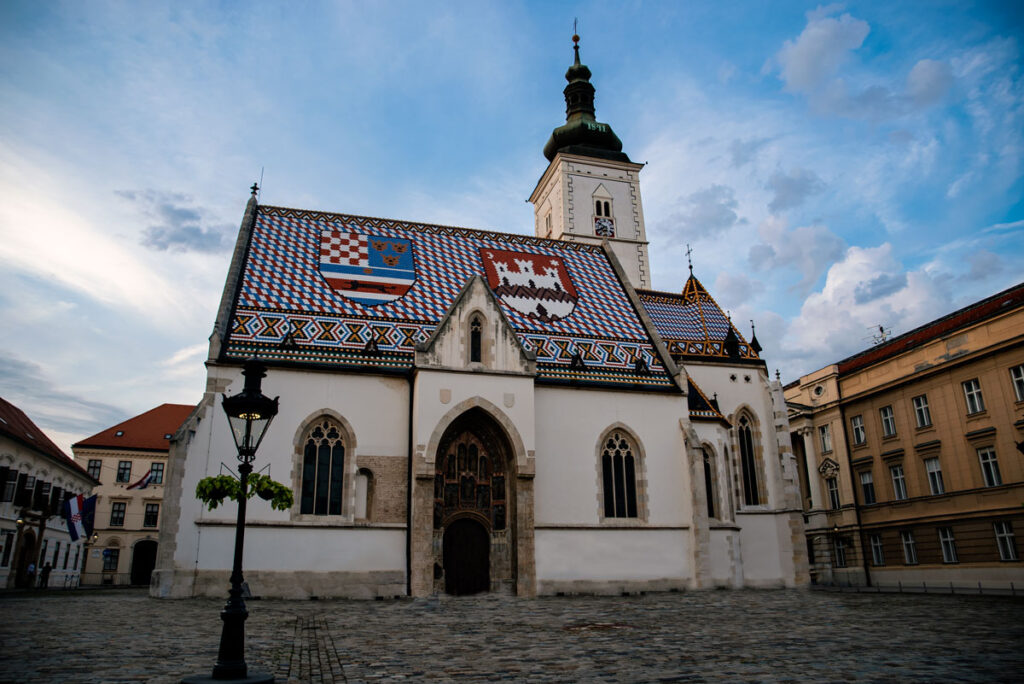
It is the details that make Zagreb so wonderful and tell us so much about the past. Pedestrian underpasses where people sought shelter during the war. Hidden entrances leading down to air raid shelters. A self-confident youth striving for freedom and recognition. The attempt of art and architecture to shake off the communist gray. The lighting of the gas lanterns in the old town, bringing tradition and history back into the present. The different architectural styles of the buildings, sometimes in Art Nouveau and Neo-Renaissance style. The small backyards of the residential buildings. The renovated alleyways in the Upper Town and the stories you can hear about old Zagreb.
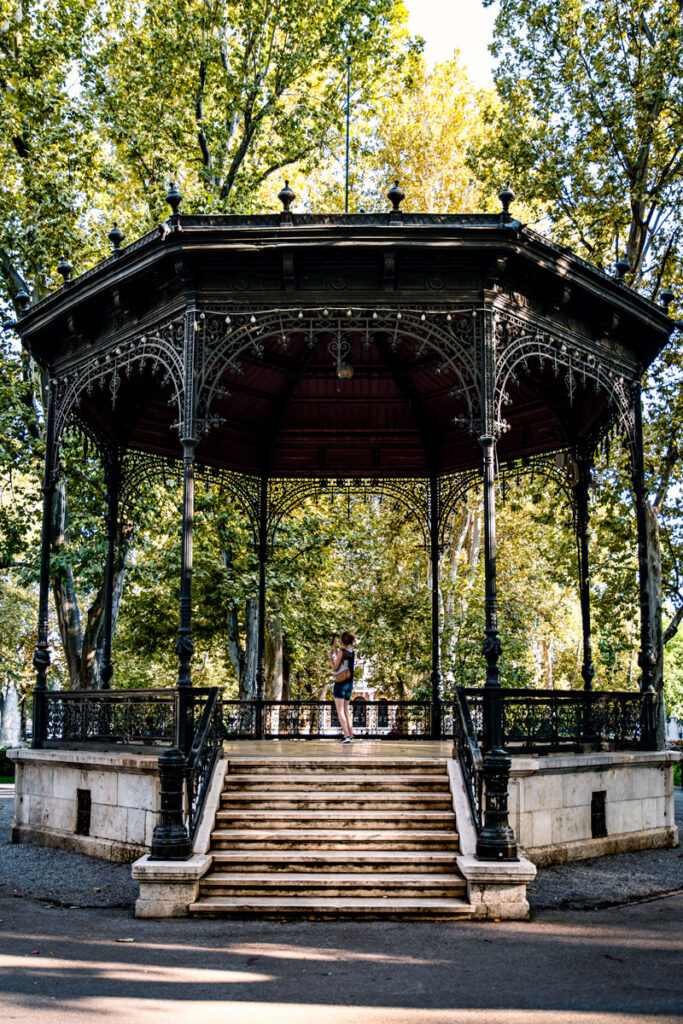
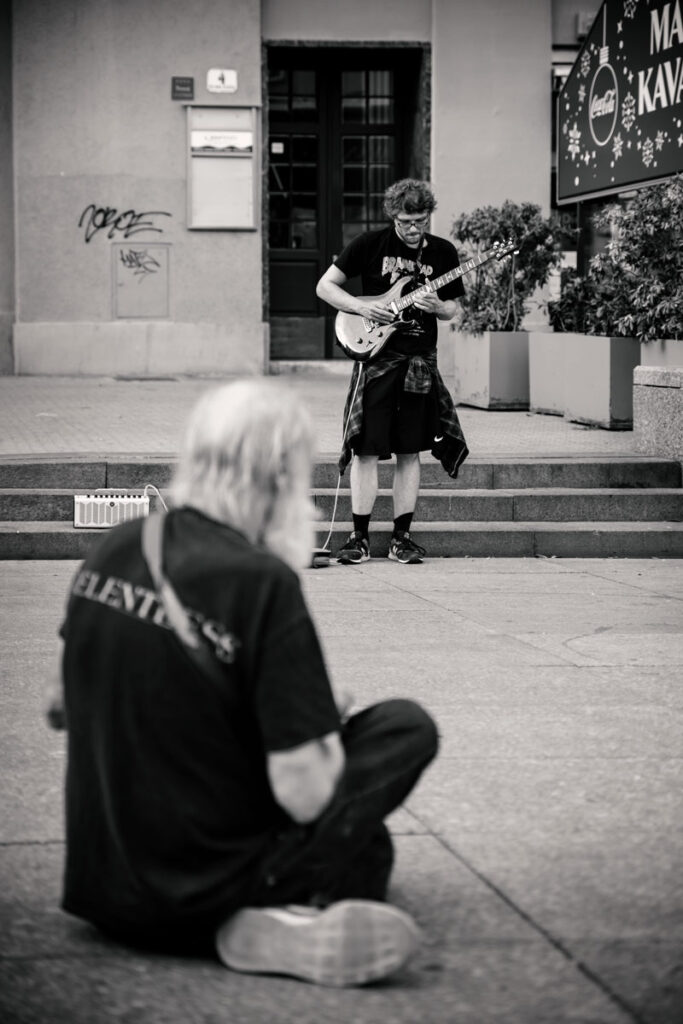
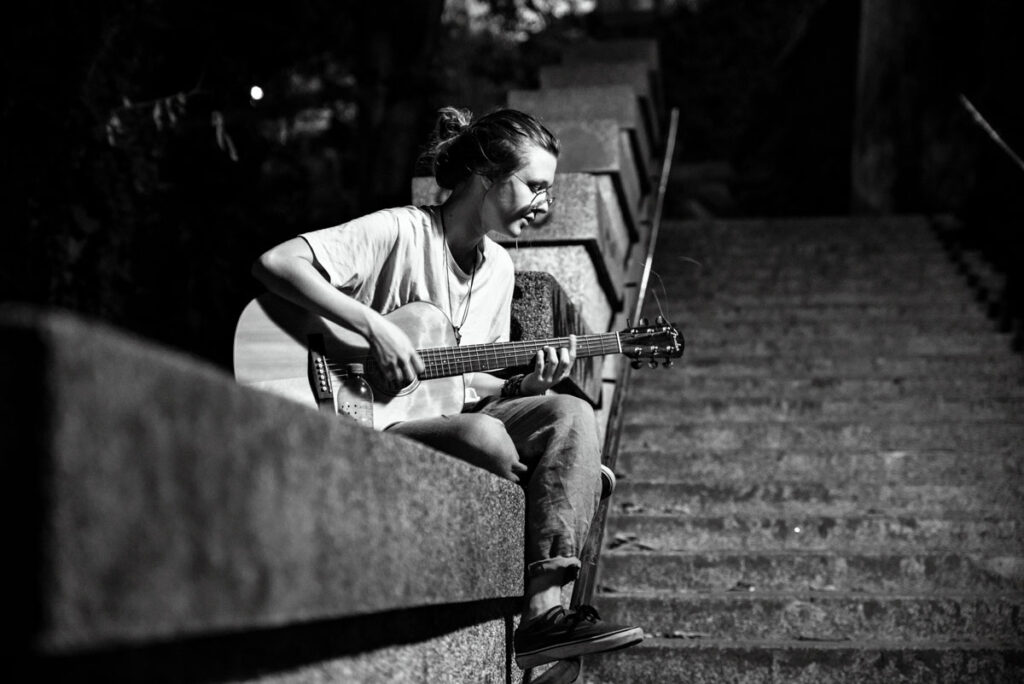

Zagreb may not be the party capital par excellence. Nevertheless, tourists and locals alike crowd the city on this hot summer evening. A viewing platform next to the Church of St. Catherine offers a magnificent view over the red roofs of the city. From up here, the colorful potpourri really comes into its own. All centuries of Central European architecture are represented. We push through a graffiti-covered alleyway past people singing and dancing. We end the evening in the tribune of an abandoned sports field on a nearby hill. The vastness of the field, the deserted silence and the hustle and bustle of the city below us make the moment perfect.
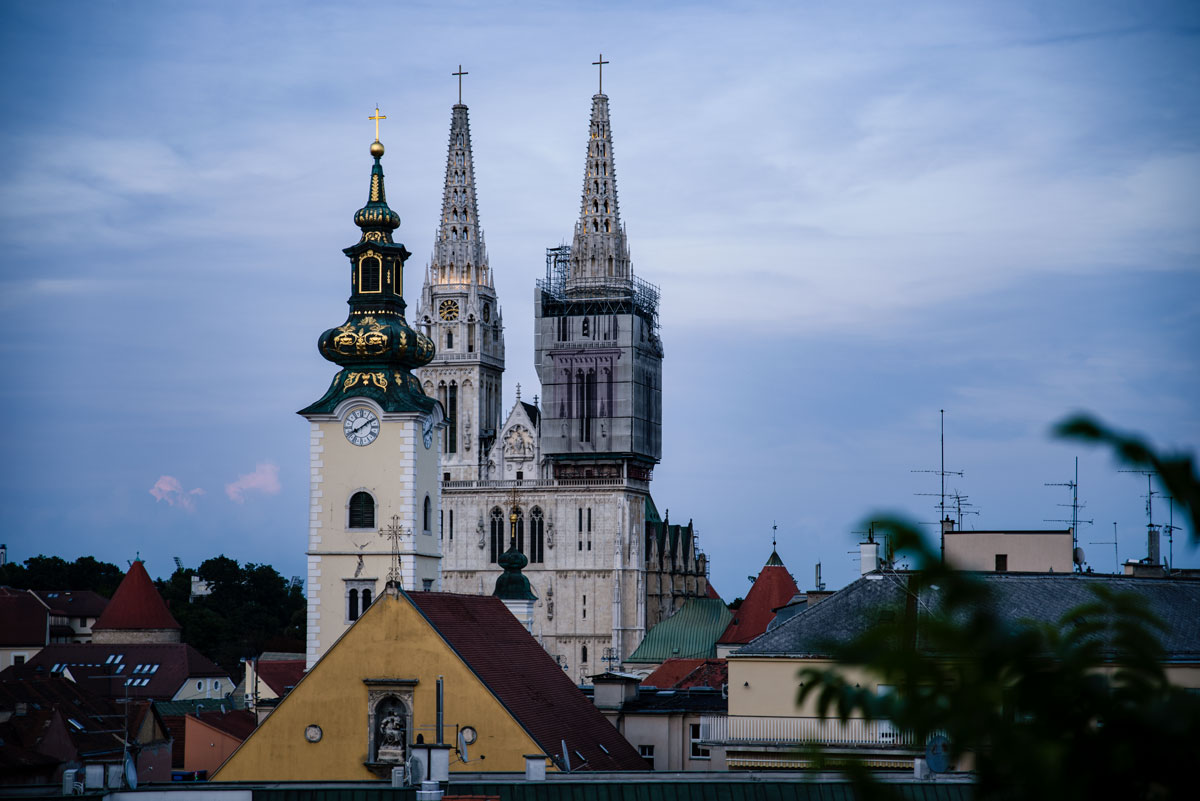
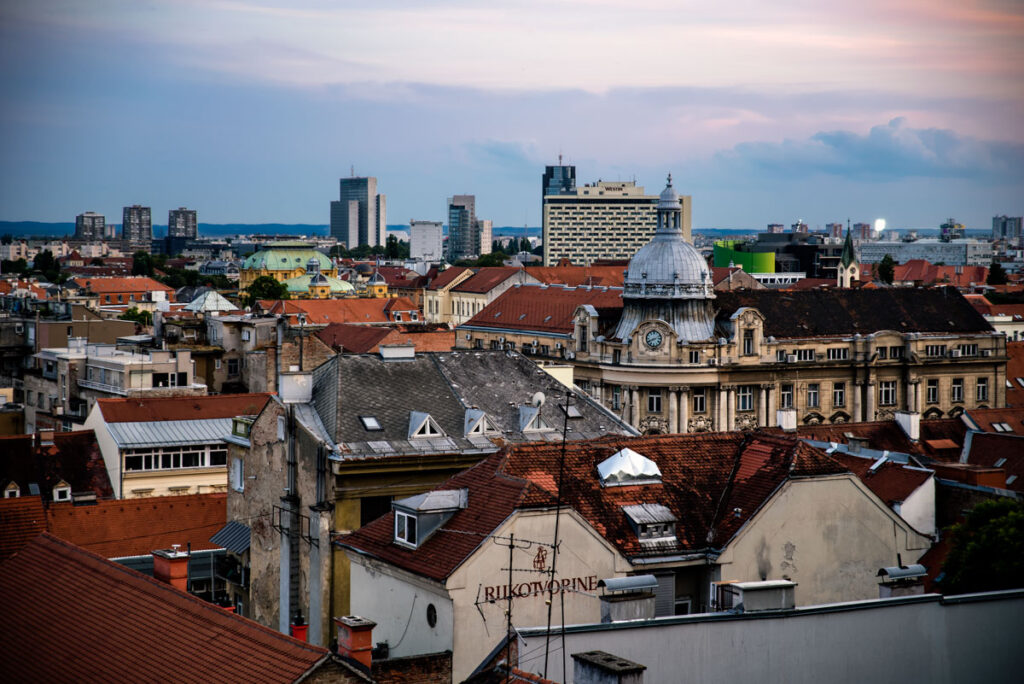
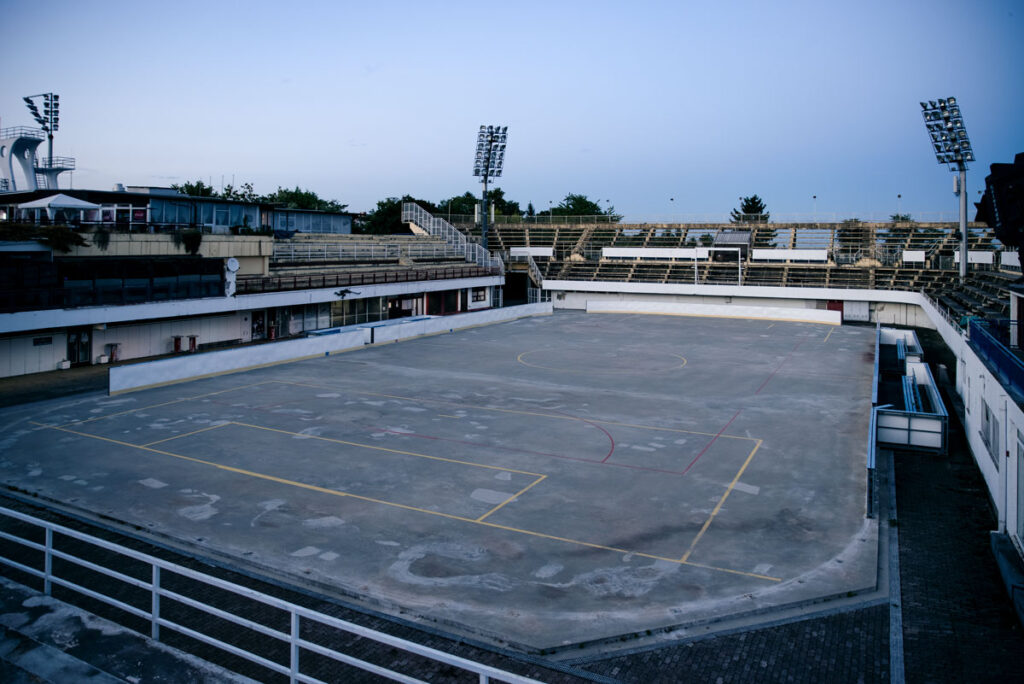
If you find yourself in the easternmost part of the country, you should plan a stroll through the tranquil town of Osijek. Surrounded by vineyards and marshland, this cultural center is located in the middle of the province of Slavonia. Most of the houses have been refurbished. A few bullet holes in the facades still show traces of the war of liberation from the Yugoslavian empire. While we in Germany only know this history from books, it is a living memory in the Balkan states. People our age spent their childhood in bunkers and on the run. The war comes to the surface here, you can touch it and it makes you feel sick to your stomach.
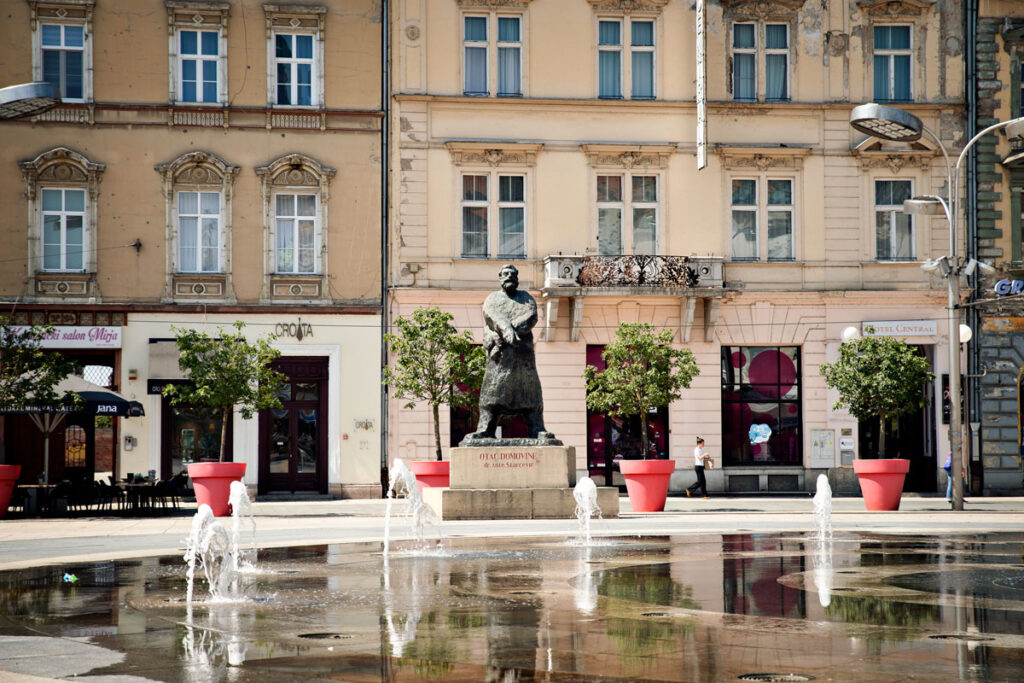

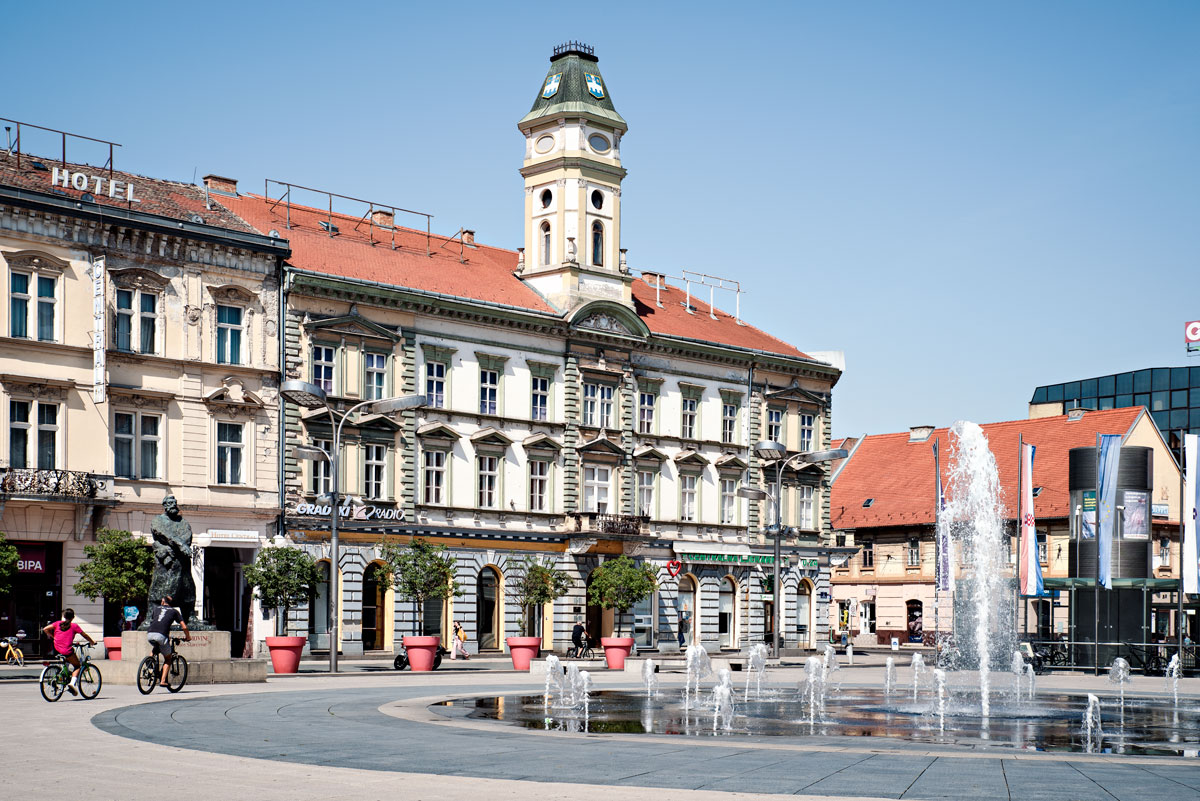
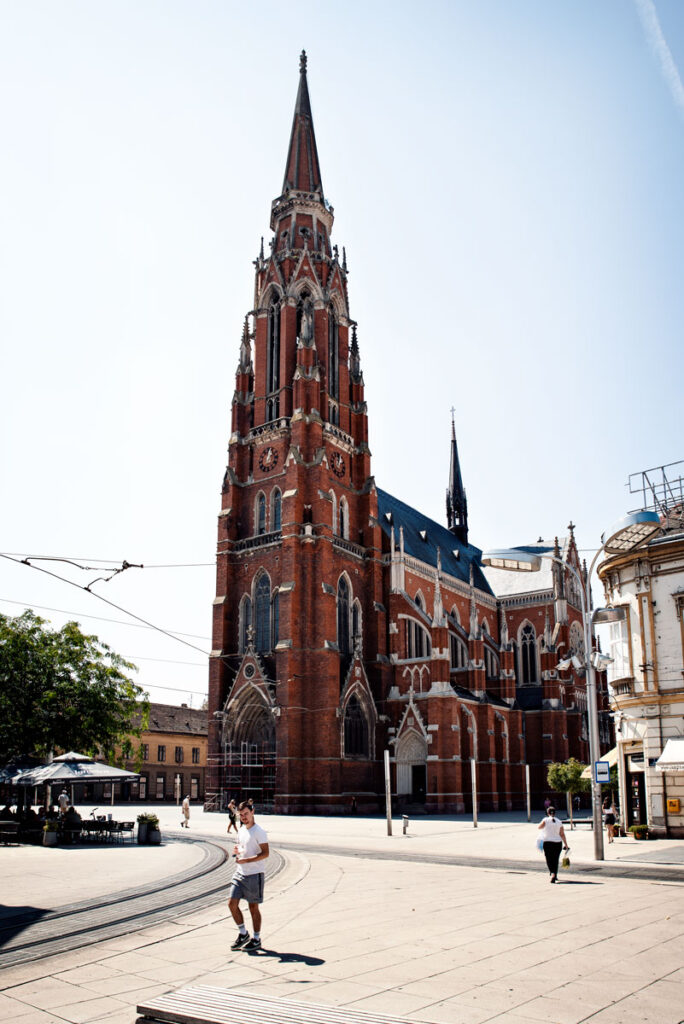
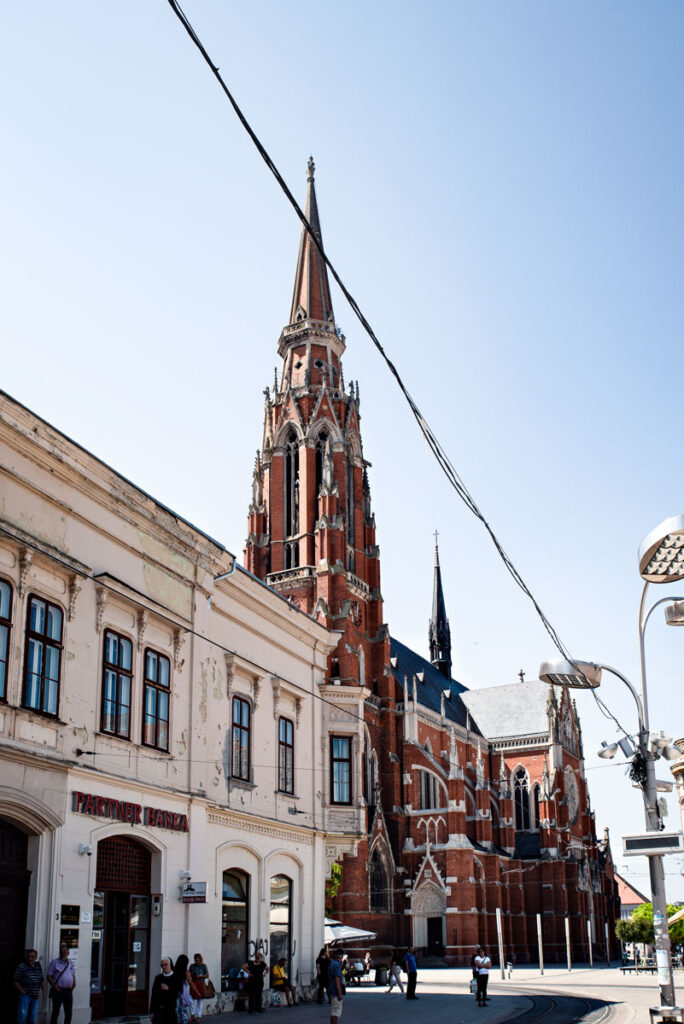
A true curiosity lies just 30 kilometers from Osijek. In the marshland of the Danube, which forms the border between Croatia and Serbia, there is a small piece of terra nullius. Land that is not claimed by any state. This is where the Czech Vít Jedlička proclaimed the Republic of Liberland. All attempts to build infrastructure and buildings failed due to resistance from Croatian border officials. Our attempt to reach the marshland on the Danube also fails. The only way to cover the ten kilometers from the nearest town to the borderland is by bicycle. But our efforts to find bicycles come to nothing. So we find an idyllic camp on the edge of a cornfield and let the hot August day fade away.

Crowds of people push their way through the narrow streets. It is almost impossible to swim against the current. The interesting places can only be visited for money. Admission to the city wall costs as much as admission to an amusement park. Food and drink are equally unaffordable.
Dubrovnik is a city that is drowning. Just like Venice and Barcelona. It can’t do without tourists, the money is too good, but it can’t do with them either. Prices are rising, but the tourists are not decreasing. We ask ourselves, how much city and how much scenery is Dubrovnik? On the one hand, it is a wonderful place full of stories and history. On the other hand, people come here for Game of Thrones and artfully orchestrated Instagram images. Reality and illusion become a mash-up. The city becomes an imaginative Disney world.
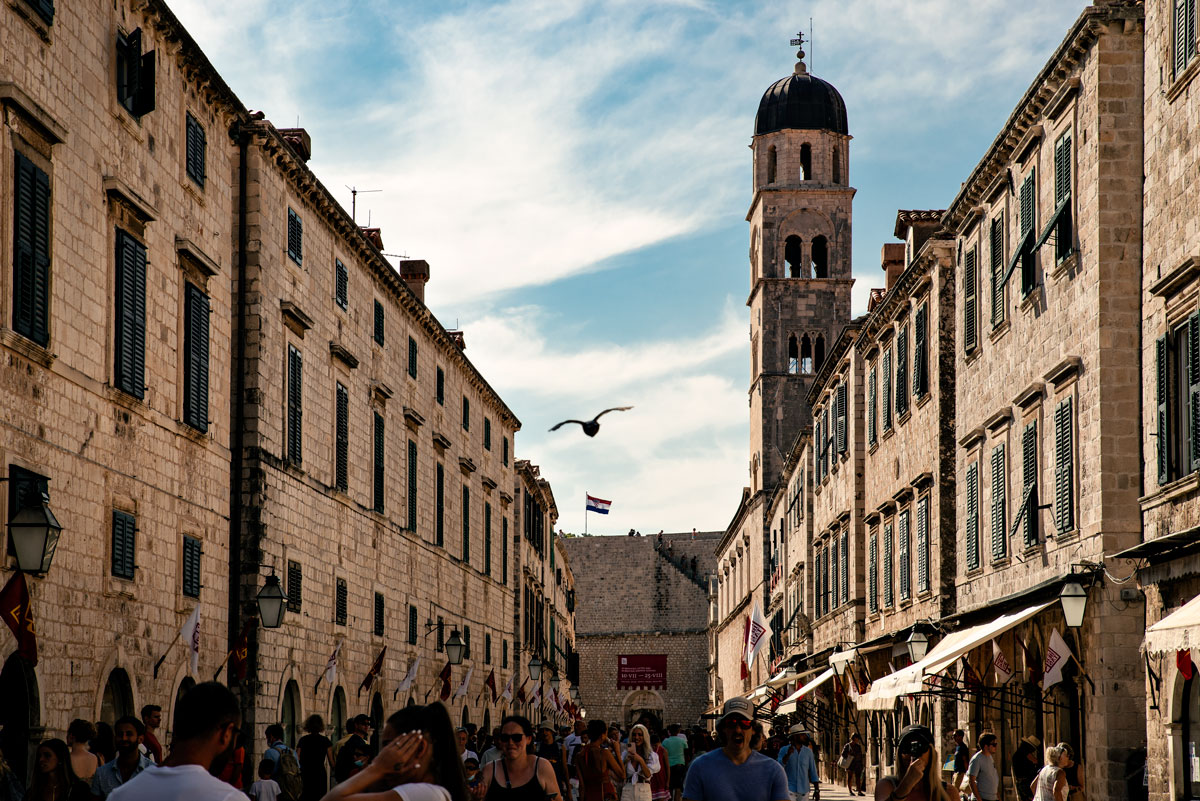
We flee along the coast to Split. A more authentic experience awaits us here. Sheets are drying on a washing line between two house walls. Potted plants stand on the windowsills of the mud-plastered houses. A concert in front of the National Theater, magnificent sailing ships in the harbor. Diocletian’s Palace is a ruin in the city center, no – it is the city center. It’s easy to fill a day among the remains of the Roman palace. We almost feel as if we have been transported back in time, strolling through the streets of the Roman Empire.
In the afternoon, we follow the palm-lined harbor promenade to Marjan, a pine-covered hill area to the west of the city. There we climb to the highest point as the sky turns purple. A cruise ship leaves the harbor, leaving a trail of waves behind it. The sun sinks behind the rocky mountains on the edge of the city.
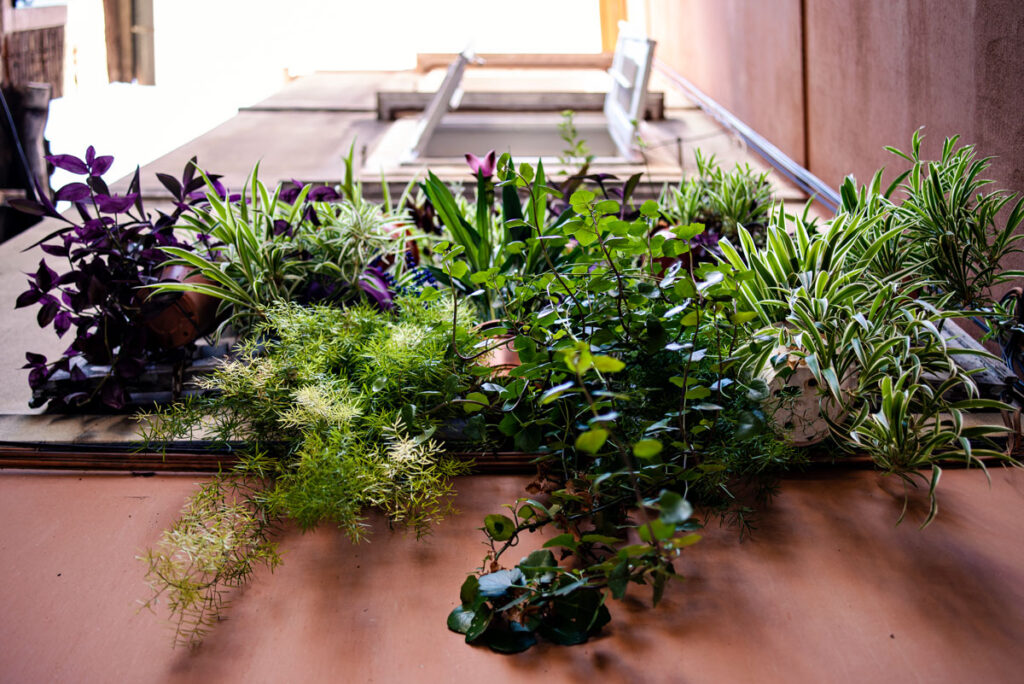

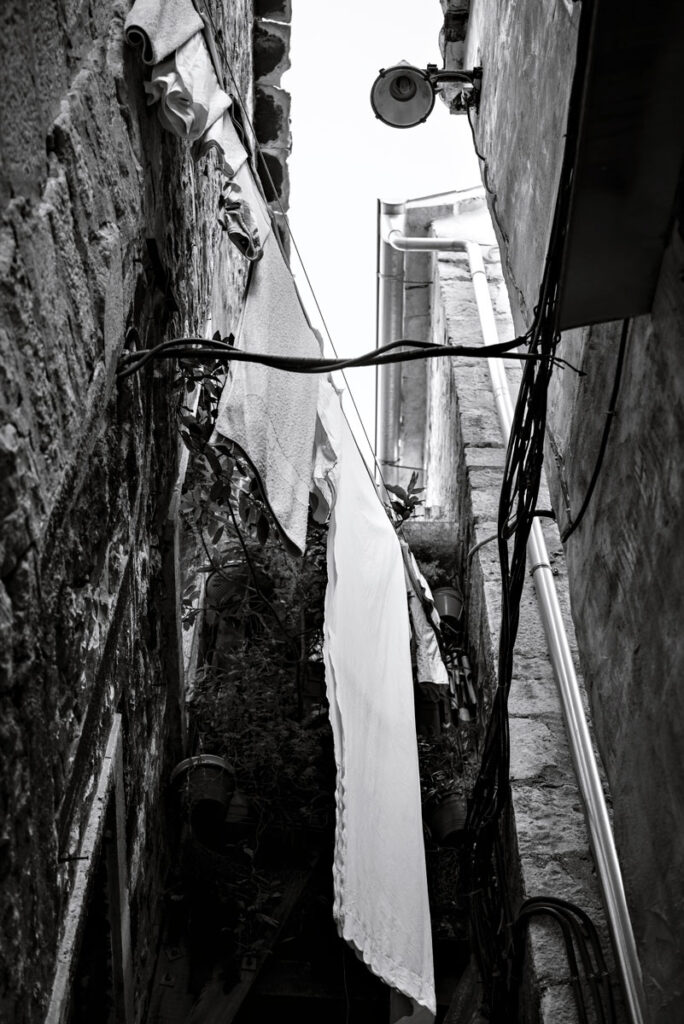
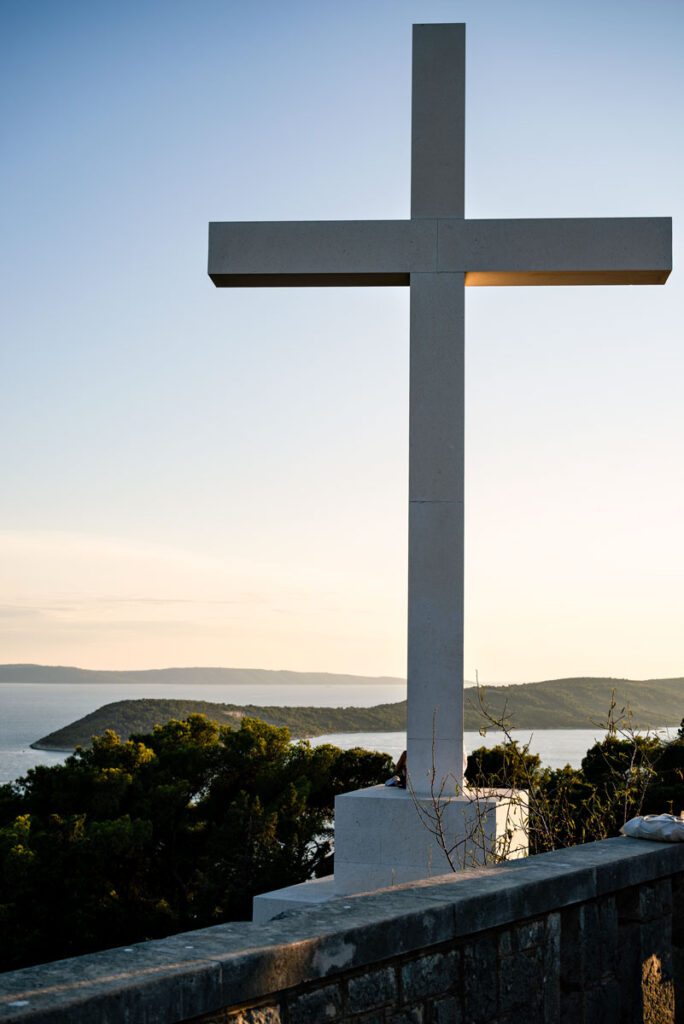
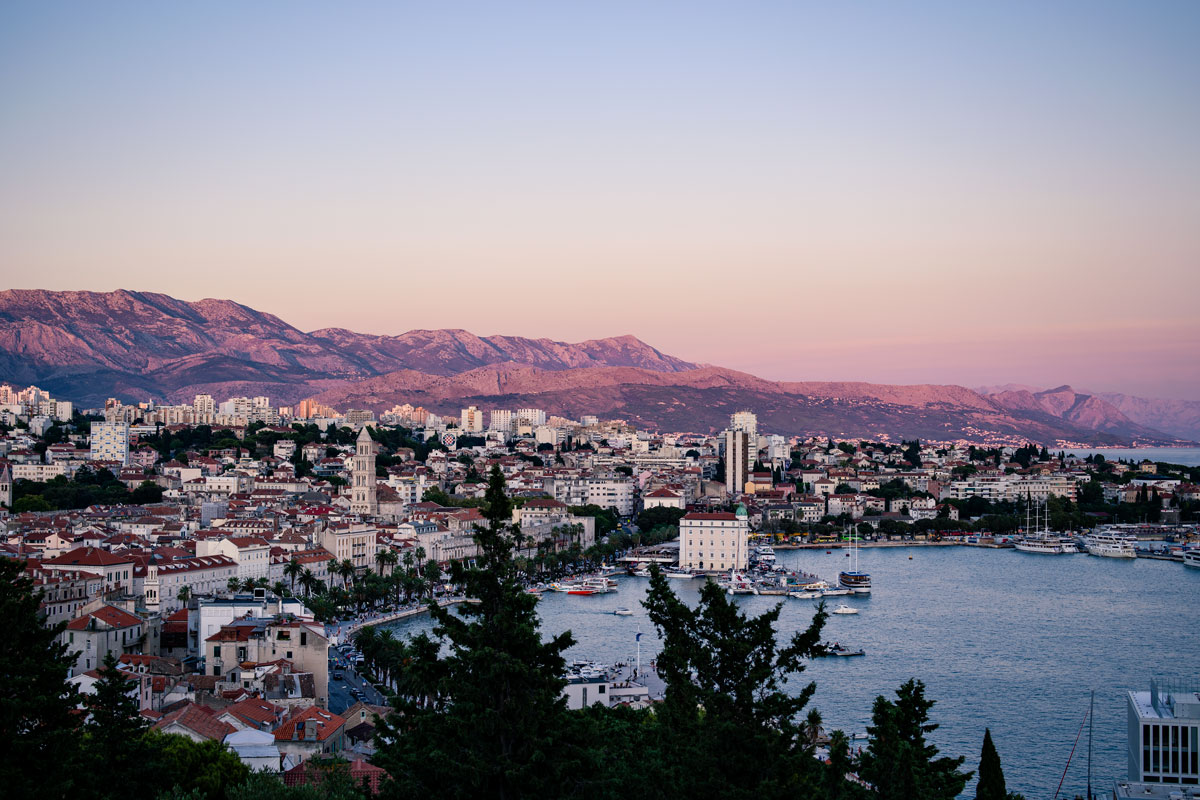
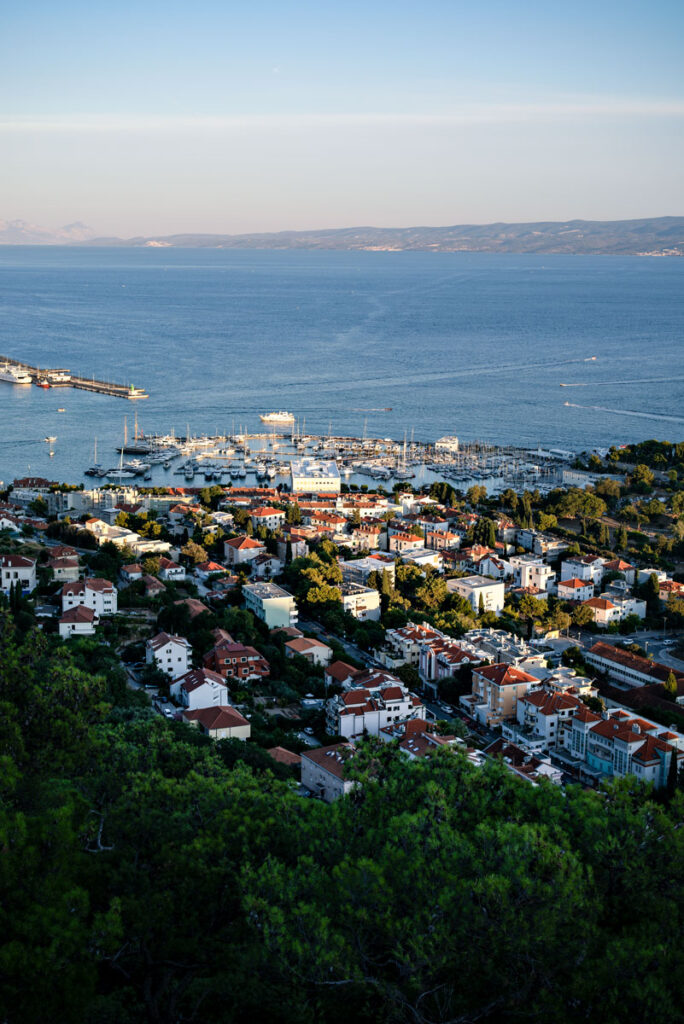
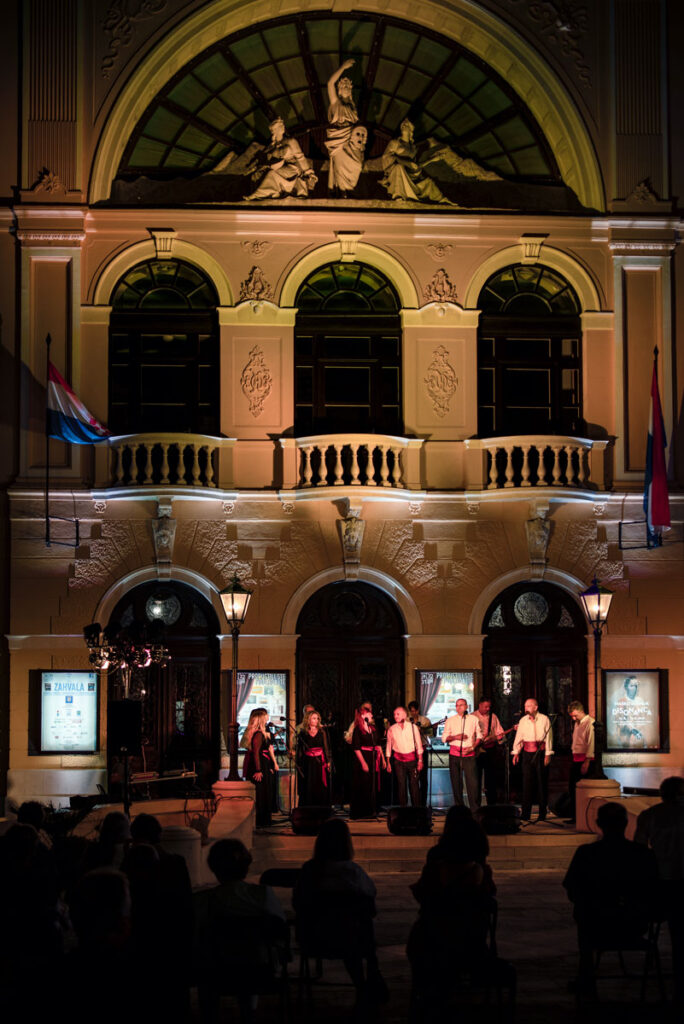
Perhaps it takes a warm climate, passionate people, a salty sea breeze and a fire burning in the heart for a region to be as beautiful and rich in culture as Italy, the south of France, Andalusia, Greece or Croatia. There are still so many places we want to see in Croatia. From the Plitvice Lakes to the thousand islands in the turquoise waters. From diverse cities to quiet bays – there is no shortage of unique places. And time and again, Croatia captivates us with its unmistakable beauty.
Info about our trip
In our opinion, Croatia is an almost underrated travel destination. Besides its coastline, it has so much more to offer: Incredibly beautiful cities, an enormous amount of history, culture and tradition. An excellent (tourist) infrastructure and extensive national parks. Everyone should be able to find what they are looking for on their vacation here, regardless of whether it is a relaxing or active vacation. Another plus point: you are in the EU and enjoy both your local data flat rate and, since 2023, easy payment with the euro. What’s more, prices in Croatia are a good deal lower than in Germany.
As already mentioned, the general price level is around 20% lower than in Germany. You can eat and sleep well and cheaply, especially away from the large coastal towns. In the tourist strongholds, on the other hand, the prices are usually brutally inflated and you won’t get acceptable quality in return.
Like all Balkan countries, Croatian cuisine is very meat-heavy. Ćevapčići with ajvar is always available everywhere. You’ll notice the Turkish influence in burek or sarma. Thanks to its proximity to Italy, you can also eat excellent pizza and pasta, and Croatia also has great wine-growing regions. The ideal snack to take away, or if you’re in a hurry, is pljeskavica: meat in flatbread. Đuveč rice or stew is also a delicious side dish. In the coastal region, fish and seafood are of course the main ingredients. Just be careful which restaurants you go to. It’s all too easy to end up in a tourist trap with tiny portions, cheap ingredients, poor quality and high prices. We noticed such overpriced restaurants in Split and Dubrovnik in particular.
In Zagreb and Split, we stayed in Airbnbs, which we can’t recommend to you or which no longer exist. If you ever travel to the east of Croatia and the region around Osijek, then we definitely recommend Camping Suza Baranje. It is idyllically situated on the edge of a field, with shady trees and a small pond. The prices are reasonable, the sanitary facilities are clean and you can also hire bicycles. But beware: when we arrived, the reception was unmanned. An information board at the campsite indicated that it was possible to check in in the evening. So if you want to hire bikes, you can only do so for the next day if reception is unmanned during the day, as it was for us.
Crime hardly plays a role in Croatia. Severe earthquakes are rare. Smaller tremors, which are barely noticeable, occur very frequently. There are still landmines in the border areas, especially with Serbia (east of Osijek) and towards Bosnia and Herzegovina. Signs usually indicate the danger. You should therefore not leave the paths here!
Croatia is a modern and safe country with a well-developed infrastructure. Nothing stands in the way of a family vacation. The large number of islands with excellent bathing spots and national parks with waterfalls and lake areas that are ideal for hiking are perfect for children to have fun and explore. Croatian cuisine is suitable for children and the journey from Germany is very easy.
A trip to Croatia is probably best done with your own car or a rental car. We cannot judge how good the public transport is. The road network at least is well developed. You can now also drive to the exclave of Dubrovnik over the Pelješac Bridge without having to leave the country for Bosnia. This saves you a border crossing into neighboring Bosnia and Herzegovina.
Zagreb and Split are manageable large cities. You can explore all the interesting sights and attractions on foot. You pay tolls directly at the highway, and from 2025 there will be an e-vignette.
Off-road driving: We didn’t drive any off-road tracks in Croatia. The situation is similar to Germany: the routes are either not legally accessible or not interesting. For off-road riders, it only gets exciting from Bosnia and Herzegovina onwards.
- Anyone interested in the modern history of the Balkan region should read Marie-Janine Calic’s Geschichte Jugoslawiens
- Ludwig Steindorff, on the other hand, draws a broad arc from the Middle Ages to the present day in his Geschichte Kroatiens
- A special recommendation for explorers is Lost Places in Kroatien by the authors Georg Lux and Helmuth Weichselbraun
